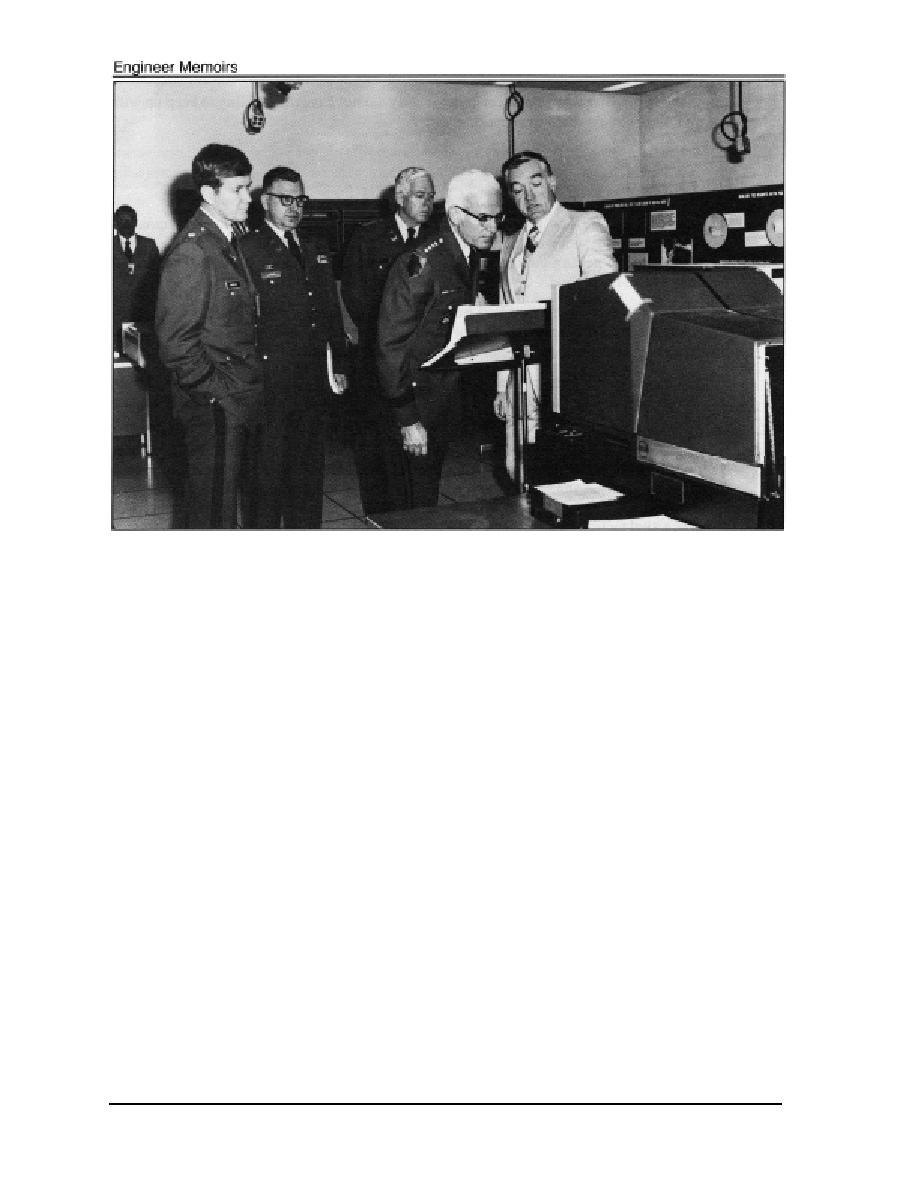
General Bernard Rogers, a classmate of General Morris at West Point, visited the Engineer
Topographic Laboratory when he was Supreme Allied Commander, Europe. General Rogers is
second from the right and Genera/ Morris is third from the right.
question that as our country grew, used more and imposed greater burdens on our natural
resources, we would have to take stock of that growth and our development attitude.
The evaluation was precipitated, at least accelerated, by the environmental movement. The
environmentalists who raised the question of the destruction of our resources and the ensuing
long-term effects precipitated a change in our nation's policy. NEPA and subsequently
Section 404 of the Clean Water Act amendments are evidence of their influence.
Section 404 put the Corps of Engineers in an ambivalent position. On one hand, there was a
great pressure on the Corps to operate its business in accordance with the new policies, and
that put numerous projects under close scrutiny. On the other hand, the Corps of Engineers
was placed in the position of having to monitor and approve development by others in
navigable streams and wetlands.
Those same rules gave project opponents a basis to challenge the method of satisfying them.
Of course, everybody knows the lawsuits and all the stories about the snail darter, the Indiana
gray bat, the striped bass, the eagle, the black-footed ferret, the peregrine falcon, et cetera.
One reaction to the constraints on construction was to find nonstructural solutions to various
problems. As already covered, the Corps became the frontrunner. As early as 197 1 we began
to discuss ways to solve the drainage downstream from Chatfield Lake through the small
residential community of Littleton, Colorado. Ultimately, legislation was adopted to use open
land as a nonstructural solution to this drainage problem.
186



 Previous Page
Previous Page
